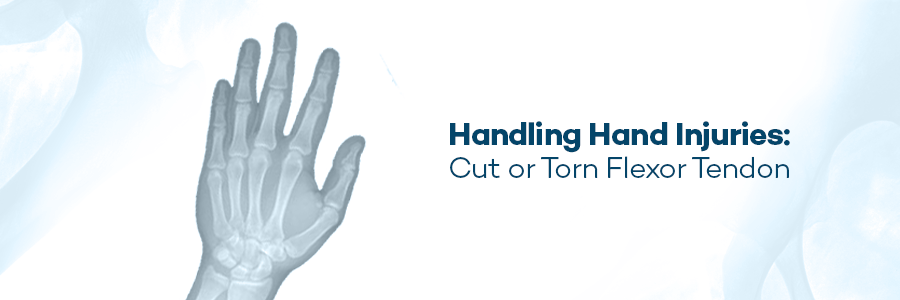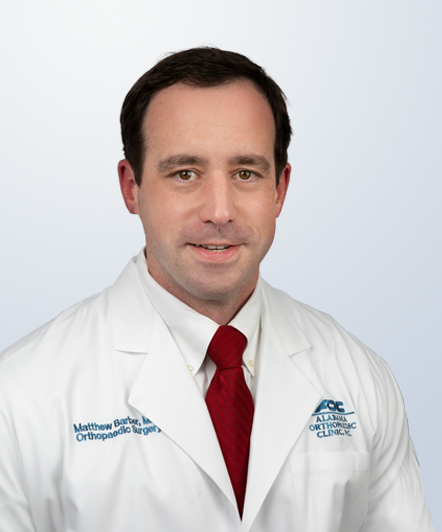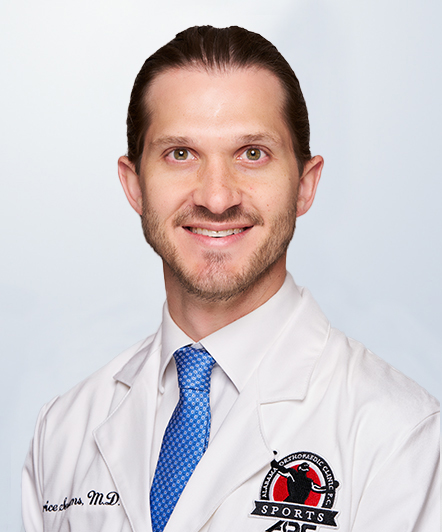Skilled Sailors know experience wins races. Skilled sports and shoulder surgeon relies on experience. Experience teaches prompt attention to detail, often avoids complications and even injury. Experience allows early diagnosis and prompt treatment and possibly avoiding surgery. Experience allows a surgeon to employ minimally invasive state of the art technology. Experience, crucial to winning races and best treatment outcomes. Experience at AOC. Comebacks start here.
Category Archives: News and Press

Labrum Tear: Solutions and Treatment
The football season is in full swing, and while each snap of the ball is thrilling for fans, for the athletes on the field, one wrong hit can lead to serious shoulder injuries, such as a torn labrum.
The shoulder is made up of three bones: the shoulder blade (scapula), the upper arm bone (humerus), and the collarbone (clavicle). On the outer edge of the glenoid (the shallow socket in which the upper arm bone rests in the shoulder blade) is the labrum, a soft tissue that helps stabilize the joint, makes the socket deeper, and allows a variety of movements.
A labrum can be torn in a number of ways; from falling on an outstretched arm, a direct hit to the shoulder, a forceful pull on the arm, or a forceful movement when the arm is above the shoulder level. Athletes who partake in repetitive overhead arm movements, such as quarterbacks and receivers, are especially at risk of a torn labrum.
Symptoms of a torn labrum typically include:
- A sharp popping in or locking of the shoulder
- Pain during shoulder movement
- Difficulty lifting objects, especially when lifting overhead
- Shoulder strength decrease
- Diminished range of motion
If surgery is required, it will be done with arthroscopy, which means the surgeon inserts a small camera into the shoulder joint through a small incision. The camera, called an arthroscope, provides pictures on a screen to help the surgeon guide and maneuver small surgical instruments to fix the tear.
For more information, call 251-410-3600. Comebacks start here.

With a heavy heart that we share the passing of Dr. Zarzour

It is with a heavy heart that we at Alabama Orthopaedic Clinic share the passing of our Dr. Robert Zarzour. There will never be a man of such dignity, integrity and compassion as our Dr. Z. We ask that you keep the Zarzour Family and the AOC Family in your thoughts and prayers as we celebrate the life of this amazing healer to all. The family has asked in lieu of flowers that donations be made to the Fuse Project, P.O. Box 1134, Mobile, AL 36605, or to Prichard Preparatory School, 743 Mt. Sinai Ave, Whistler, AL 36612. We are blessed to hold his memory in our hearts.

Meniscus Repair

Athletes are at risk for a number of knee injuries. A common knee injury experienced by many players—especially those participating in contact sports—is meniscus tears. Meniscus are the pieces of cartilage situated between the thighbone and shinbone that cushion the joints, provide stability, and act as shock absorbers.
There are multiple ways the meniscus can tear, the most frequent being bucket handle, flap, and radial. A common reason for a meniscus tear is a sudden twist of the knee, but it can also happen as cartilage weakens with age.
Common symptoms of a meniscus tear include:
– Pain
– Swelling
– Stiffness
– Inability to move the knee
– Locking of the knee
While many with a meniscus tear can still walk on their knee—or even keep playing sports—over a period of a few days, the knee will get more stiff and swollen. And if not treated properly, pieces of the cartilage can even get loose and move into the joint, causing further discomfort and problems. Many times, meniscus repair requires a surgical procedure known as knee arthroscopy. Arthroscopy is a common procedure done through a small incision in which a small camera is inserted into the knee joint. This allows the orthopedic surgeon the information needed to repair or removed the damaged cartilage, which is done with other small surgical tools being inserted through other small incisions around the knee.
For more information, call 251-410-3600.
AOC, comebacks start here!

ACL Reconstruction Surgery

The anterior cruciate ligament, better known as the ACL, is one of four ligaments that hold the knee together. The ACL is also one of the most easily—and commonly—injured parts of the knee, especially for athletes. This type of injury frequently occurs in athletes who participate in high impact sports like football, basketball, hockey, and soccer. But, it can also happen even without impact from another player.
Symptoms of an ACL tear include:
-
Pain
-
Swelling
-
Instability of the knee
-
Loss of full range of motion
Approximately 200,000 ACL injuries occur every year in the United States, and on average, about half of those require ACL reconstruction surgery because once torn, ACLs generally cannot be repaired.
ACL reconstruction surgery is performed through a small incision in the front of the knee, it includes removing the torn ligament and replacing it with a new tendon, which can be taken from another part of the knee. It’s an outpatient procedure, so patients get to go home in the same day.
For more information, call 251-410-3600.
AOC, comebacks start here.

After 36 Years Dr. Robert Zarzour is Retiring

After 36 years of providing excellent orthopaedic medical care, it is with mixed emotions that we announce the retirement of Alabama Orthopaedic Clinic surgeon, Robert J. Zarzour, MD. As a beacon of patient centered care, Dr. Zarzour has been an integral part of our practice and will always be valued and respected. His hard work, total patient commitment, and heart-felt dedication are worthy of great admiration. Dr. Zarzour was one of the 3 original founding physicians of AOC and a driving force behind developing our current Outpatient Orthopaedic Center.
There is no doubt that Dr. Zarzour will be missed by the staff that he has worked so closely with, by the entire AOC family and especially by his patients. He was the surgeon who was always present, truly cared and provided exceptional medical treatment to his patients over the years.
At this time, you usually say, “It will be hard to fill his shoes.” However, we at AOC are excited to announce the arrival of another Zarzour to the AOC family. In the summer of 2017, we at AOC will be proud to welcome that Dr. Grant Zarzour, who will be joining our practice as a Fellowship trained total joint surgeon
While it is hard to say good bye to Dr. Zarzour, it helps to know that another Zarzour arrival is just around the corner.
Thank you Dr. Zarzour for showing us at AOC, your patients and your community what a true gentleman looks like.

Rotator Cuff Repair

The rotator cuff is a critical part of the shoulder. Consisting of the muscles and tendons located at the shoulder joint, the rotator cuff attaches the shoulder to the upper arm, helping the shoulder function correctly and allowing for the arm to be raised.
Injuries to the rotator cuff, such as a strain or tear, are actually quite common. These injuries can happen quickly because of a sudden movement or occur over a slow period of time due to repetitive movements or overuse of the shoulder itself.
Some of the most common symptoms of a torn rotator cuff include:
-
Persistent pain
-
Limited use of the arm
-
Muscle weakness
Surgery may be the only option to repair a tear. There are multiple options for rotator cuff repair, including less invasive options like arthroscopy, which requires inserting a small camera into the shoulder joint. And, much of the time, surgery can be performed on an outpatient basis, not requiring the patient to stay at the hospital overnight. It’s important to talk with your doctor to determine which surgical option is right for you and your individual need.
For more information, call 251-410-3600.

Handling Hand Injuries: Cut or Torn Flexor Tendon

The human hand is comprised of many tendons, which are tissues that connect muscle to bone. Tendons help the hand move by pulling the bone as muscles contract. For example, extensor tendons are located on the top of the hand and straighten the fingers. Flexor tendons are on the palm side and work to bend the fingers. Flexor tendons actually start at the elbow and forearm regions as muscles and become tendons just past the middle of the forearm.
Because they are close to the skin’s surface, any sort of deep cut or tear can hit a flexor tendon. While a cut or tear—whether it occurs in the forearm, wrist, palm, or finger—might seem minor, in reality, it can completely prevent fingers from bending.
Some of the most common symptoms of a cut or torn flexor tendon include:
• An open cut or tear on the palm side of the hand
• Inability to bend one or more fingers
• Pain
• Tenderness in finger
• Numbness in fingertip
Because cuts or tears pull the ends of the flexor tendon apart, it’s impossible for a tendon to heal on its own. A doctor’s treatment is required and most of the time requires surgery. The Hand Team at AOC is proficient in flexor tendon repair. We understand that a flexor tendon injury greatly impacts the ability to perform even the smallest activities and tasks. Our board certified Hand Team of Dr. William Crotwell, Dr. Suanne White-Spunner, and Dr. Jared Burkett use the most up-to-date procedures to get your life quickly back on track. For more information, call 251-410-3600 or visit us at alortho.com.

Carpal Tunnel Syndrome: Problem and Solution

Carpal Tunnel Syndrome (CTS) is a condition brought on by increased pressure on the median nerve at the wrist. In short, it’s a pinched nerve in your wrist. Symptoms may include:
• Numbness
• Tingling
• Pain in the arm, hand and fingers
There is actually a space in the wrist called the carpal tunnel where the median nerve and nine tendons pass from the forearm into the hand. CTS happens when pressure builds up from swelling in this tunnel and puts pressure on the nerve. And when the pressure from the swelling becomes great enough to disturb the way the nerve works, you will start to feel that numbness, tingling, and pain in the arm, hand, and fingers.
Normally, the numbness or tingling most often takes place in the thumb, index, middle and ring fingers. These symptoms are usually felt during the night, but also may be noticed during daily activities such as driving or reading a newspaper. And as this progresses, patients may notice a weaker grip, occasional clumsiness and a tendency to drop things. As it goes untreated, sensation may be permanently lost and the muscles at the base of the thumb slowly shrink causing difficulty with the pinch.
The Hand Team of AOC is proficient in Carpal Tunnel Release Surgery. Understanding that this disorder is one of the most commonly caused absences from work, the board certified Hand Team of Dr. William Crotwell, Dr. Suanne White-Spunner, and Dr. Jared Burkett use the most up-to-date procedures to get your life quickly back on track. For more information, call 251-410-3600 or visit us at alortho.com.

Complex Foot and Ankle Problems

The human foot is a very complex structure with 26 bones, 33 joints and more than 100 ligaments and muscles working together to achieve a combination of stability and flexibility. The ankle is the joint that connects the foot to the tibia and fibula bones of the lower leg. Between the two, the foot and ankle bear our entire body weight that allowing us to stand, walk or run and can move and flex in a large variety of ways. When the foot and/or ankle is injured, it requires highly specialized treatment.
The AOC Foot and Ankle Team are orthopaedic surgeons who are trained in treating the mild to the most complex foot and ankle conditions. These complex fracture symptoms may be an indication of a foot fracture or ankle fracture:
• Severe pain which generally hinders the patient’s ability to walk
• Swelling
• Bruising
• Redness
Misdiagnosis or just trying to walk through the pain can cause sufferers more damage as well as a longer healing period.
For an appointment call 251-410-3600 or visit us on alortho.com.

























